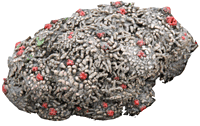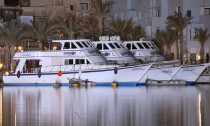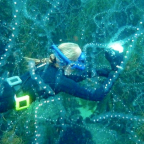
Pyura chilensis
Tunicates, commonly called sea squirts, are a group of marine animals that spend most of their lives attached to docks, rocks or the undersides of boats. To most people they look like small, colored blobs. It often comes as a surprise to learn that they are actually more closely related to vertebrates like ourselves than to most other invertebrate animals. Tunicates are part of the phylum Urochordata, closely related to the phylum Chordata that includes all vertebrates.
Because of these close ties, many scientists are working hard to learn about their biochemistry, their developmental biology, and their genetic relationship to other invertebrate and vertebrate animals. A tunicate is built like a barrel...
Read More











Social Profiles